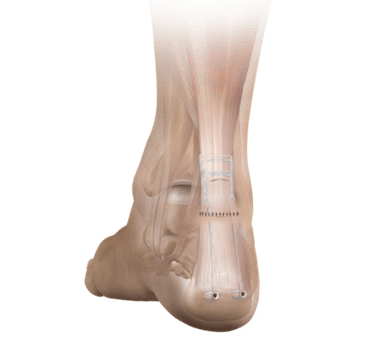Injuries Around the Foot and Ankle
What is it?
With 28 bones in your foot and many more ligaments and tendons holding the structures together, it’s not surprising that the foot and ankle is prone to injuries. Unfortunately, due to the complexity of the foot and ankle, many serious injuries are initially passed off as “an ankle sprain” or “a pulled muscle”.

If you have had an injury to your foot and ankle whether it has just happened or has been going on for some time, I am well equipped to do a thorough assessment and get to the bottom of what the injury is and get you back on the road to recovery.
What injuries are commonly missed or misdiagnosed around the foot and ankle?
When you twist your ankle you can sustain a number of injuries and unfortunately only broken bones can be seen on an x-ray which is the most common first-line investigation. Sometimes a small “flake” or “chip” of bone can be seen on the outside of the ankle which does not look too concerning. This can however be the attachment site of an important ligament and not having any treatment can lead to an unstable ankle that gives way in the long term.
Even if there is not a chip of bone the ligaments on the outside of the ankle can be stretched or torn and although surgery can usually be avoided it is really important to understand the injury and put into place a good rehabilitation plan.

Sometimes the ligaments on the inside of the ankle are also injured. Again, surgery can usually be avoided but understanding the diagnosis is the key to effective and successful rehabilitation. Another common cause of ongoing pain after an ankle sprain is an injury to the joint between the two leg bones known as the syndesmosis. If the injury is acute this can be picked up on MRI, however, if it has been going on for more than a few months a diagnostic arthroscopy is the best way to assess this area.

If you are playing sports, running for a bus, or just step off a curb awkwardly and hear a pop or feel like someone has kicked you, you may have torn your Achilles tendon.

Most people come straight to the hospital for a diagnosis and usually, the appropriate diagnosis is made, but sometimes it is misdiagnosed as an ankle sprain.

This can lead to long-term weakness if not appropriately treated. If it is picked up relatively soon after injury, the tendon can be repaired surgically but if it has been delayed for over a month, I usually recommend a keyhole reconstruction using a nearby tendon.
If it is diagnosed immediately and treated appropriately we can usually get away without any surgery. Conversely, sometimes a calf muscle tear is misdiagnosed as an Achilles rupture. Although this is less serious as muscle tears heal well, you may be inappropriately immobilised for a long period of time when you could have had an accelerated recovery.
If you have concerns about a possible Achilles rupture or the treatment you are receiving, I am well placed to give a specialist opinion and arrange for bespoke management.

Injuries to the foot itself can be very hard to diagnose and can lead to a lot of pain and delay in correct diagnosis. Common injuries include stress fractures that without specialist investigations such as MRI can take months to diagnose and subtle ligament injuries in the middle of the foot. Some of these subtle ligament injuries are best treated with mini-open surgery to reduce the risk of arthritis and appropriate investigations and diagnosis are the keys to successful joint decision making depending on what your goals are.
Summary
Many so-called sprains will improve with time but by getting to the bottom of what is actually injured I will be able to clearly counsel you as to how long things will take to recover and put into place a personalised treatment programme. In some cases, if surgery is appropriate I will be able to explain this to you in detail and help you make an informed decision as to what is the best option for you.
